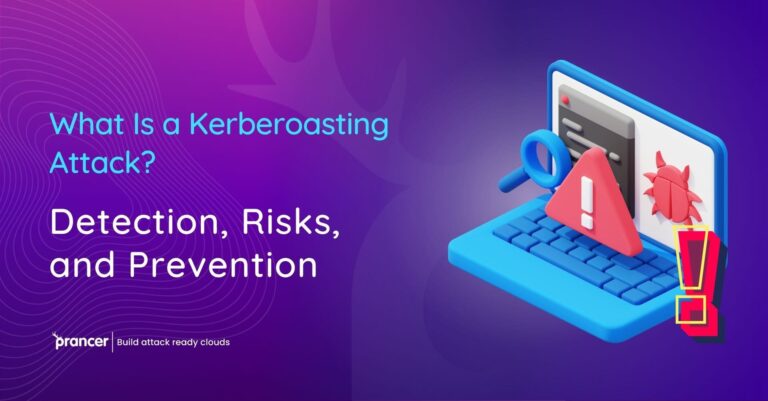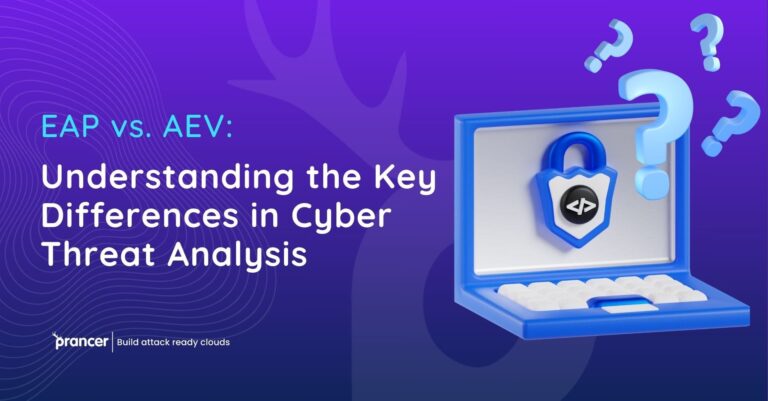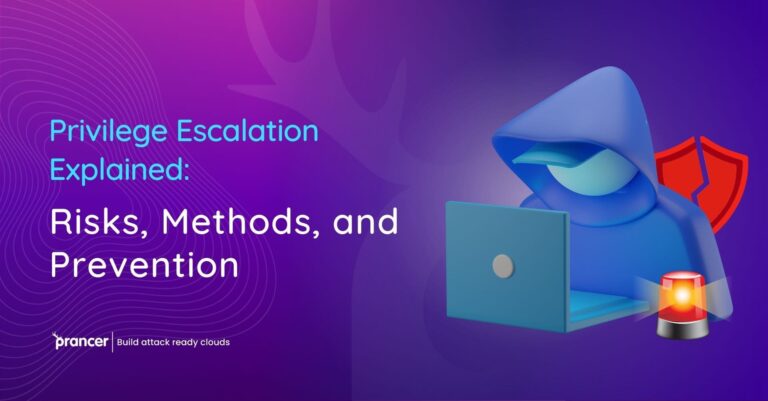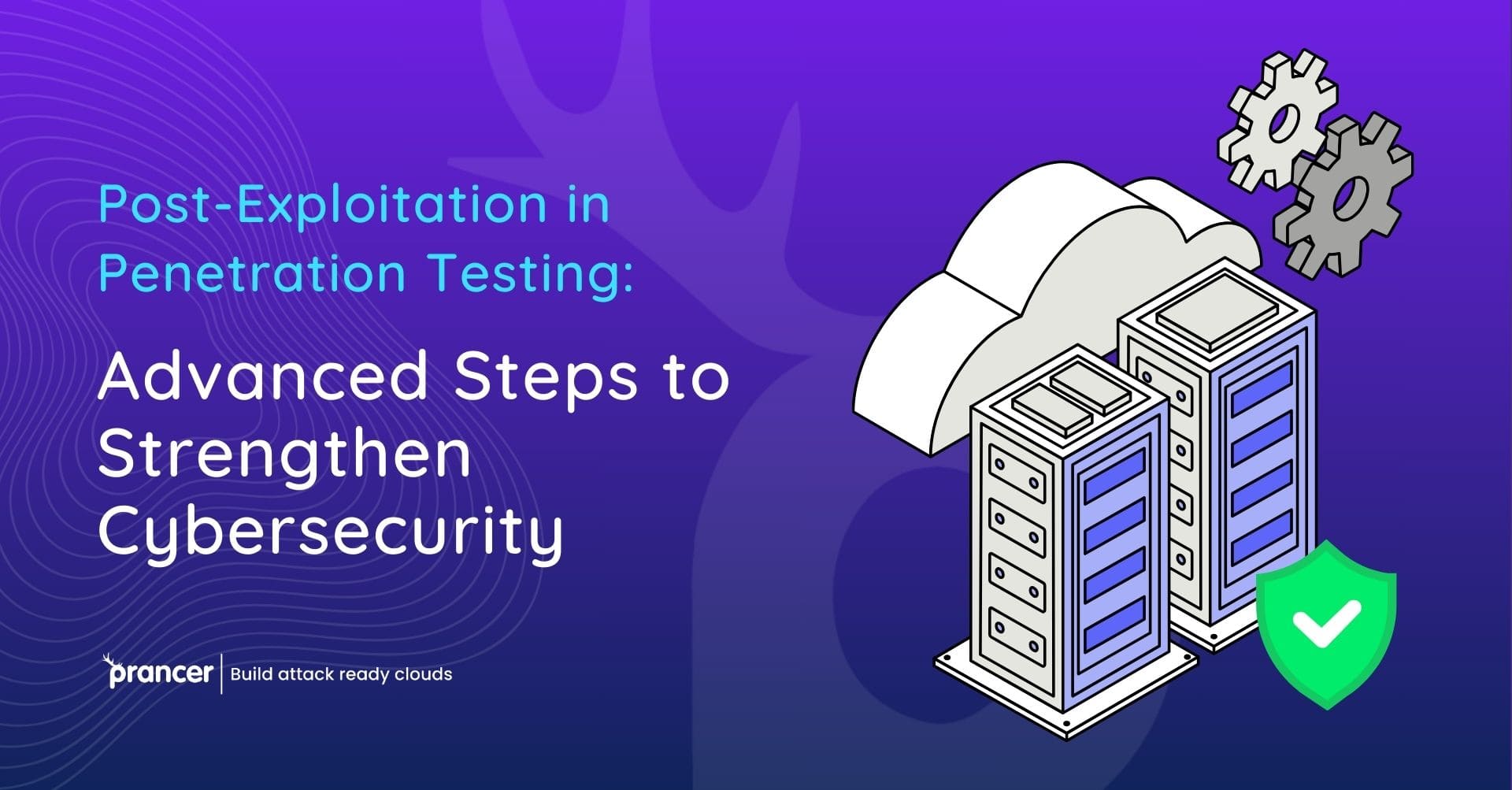Post-Exploitation in Penetration Testing is a stage in the world of cybersecurity where vulnerabilities to a system can be analyzed and mitigated after initial access has been gained. By shedding light on how extensively a bad actor could potentially damage, this stage is very useful. We, at Prancer, focus on automated penetration testing to reinforce the organization defenses while ensuring each step, especially post exploitation, is performed accurately. In this advanced section, we dig deep into how this stage converts a penetration tester’s findings into security action.
Understanding post-exploitation
Penetration Testing Post-Exploitation is the phase after having successfully accessed a target system. It’s not just about breaching defenses, it’s about understanding what happens after that breach. At this stage, testers try to get as deep access as possible, collect sensitive data, then simulate some possible attack scenarios. This analysis presents the most critical vulnerabilities which must be addressed in an urgent manner.
Why Post-Exploitation Matters
So why would organizations care about post exploitation? That’s because this is the stage where the full impact of a breach is assessed. Post exploitation examines an unlocked door that leads to a treasure trove of data. Instead, it’s about exposing how attackers can use their access to elevate privileges, exfiltrate data or execute disruption. With Prancer’s expertise the critical phase guarantees capabilities that translate into actionable insights that businesses can use to reinforce their defenses.
The main objectives of post-exploitation
The objectives of Post-Exploitation in Penetration Testing include:
- Privilege Escalation: Higher access levels to find out to what extent damage could be susceptible.
- Data Exfiltration: To know which sensitive data could be stolen.
- Persistence: Methods that attackers could use to maintain long term access.
- Impact Analysis: Assessing the impact on the business and operations of a breach – and how to mitigate them.
Understanding the attacker’s capabilities and constructing a sound security posture requires these objectives.
Types of Exploitation and Post Exploitation
Post-exploitation relies on various techniques to mimic real-world attack scenarios, including:
- Credential Dumping: Depending on how the credentials are stored, the current target application extracts these credentials for later access.
- Lateral Movement: Linking across the network to find further targets.
- Privilege Escalation Exploits: Trying to take advantage of vulnerabilities to become an administrator.
- Persistence Mechanisms: To test out ways for attackers to gain long term access to the system.
These techniques are used by penetration testers to ensure a simulation of threats is realistic.
Automated Penetration Testing in Post-Exploitation
Automated penetration testing adds an element of post-exploitation, making it much more efficient and accurate. That means vulnerabilities get identified faster and are automatically simulated, and detailed reports are generated. This phase is automated on Prancer and solves the problem of having penetration testers think about complex insights instead of focusing on coverage. This is not only time saving, but also a way to avoid human oversight.
Post Exploitation with Prancer
Post exploitation is an essential part of advancing cybersecurity and Prancer plays a role in that. We combine cutting-edge tools with expert analysis to:
- Perform routine testing tasks automatically.
- And they say they provide detailed impact assessments.
- Develop remediation plans that will be actionable.
- Safety compliance.
We have our unique methodology, that closes the gap between technical findings and business decision-making, allowing businesses to stay ahead of threats.
Take your cybersecurity strategy to the next level—book a demo and see Prancer in action today!
Advanced Tools and Strategies
Some advanced tools and strategies used during Post-Exploitation in Penetration Testing include:
- Metasploit Framework: For privilege escalation and for credential dumping.
- Bloodhound: Mapping Active Directory environments and attack paths.
- PowerShell Scripts: For seamless execution of tasks in Windows systems.
- Custom Scripts: Designed for specific environments for higher precision.
Combined with Prancer’s expertise these tools provide a thorough evaluation of security weaknesses.
This leads to challenges in Post Exploitation
Post-exploitation is not without its challenges:
- Ethical Boundaries: Avoiding harm to real systems with simulations.
- Complex Environments: In dealing with complicated and diverse infrastructures in IT.
- Data Sensitivity: How to protect sensitive information during testing?
The hurdles mentioned above are no longer a problem with Prancer’s automated penetration testing, which helps each organization to quickly and securely test their systems, compromising them ethically and efficiently.
Case Studies: The Lessons from Real World Attacks.
Examining real world cases to show how important Post Exploitation is during the Penetration Testing. For example:
- Case Study 1: A large financial institution used some significant privilege escalation vulnerabilities to stop an imminent data breach.
- Case Study 2: Lateral movement paths were identified by a healthcare provider, enabling us to provide better network segmentation.
In all these cases Prancer’s solutions were instrumental in reinforcing cybersecurity frameworks.
Conclusion: Strengthening Cybersecurity
Penetration Testing in Post-Exploitation is not an ad hoc phase of testing, it is a mainstay of appropriate cybersecurity. Through examining the effects of a breach and building the strongest possible mitigation plans, organizations can have a leg up on their attackers. Our penetration testing is automated and is able to provide precision, efficiency and actionable results; which is why we are trusted partners protecting your digital assets.




